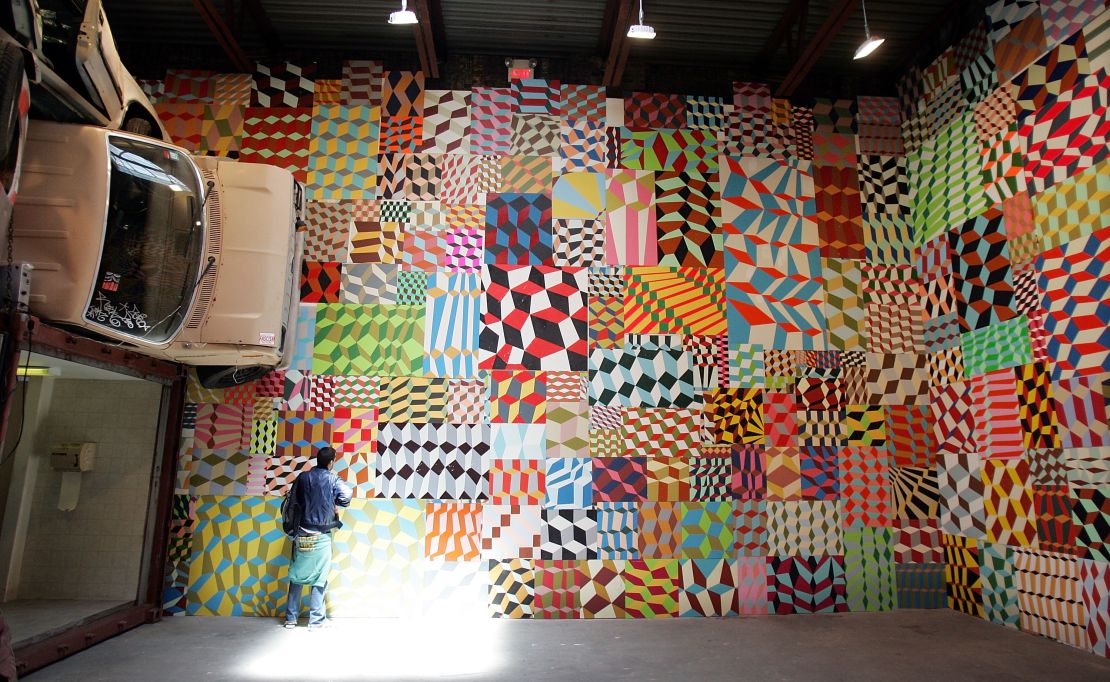Editor’s Note: This story features a video excerpt from CNN’s Talk Asia featuring an interview with KAWS. The episode airs this month.
Brian Donnelly’s beginnings were humble enough, having started out as a skater kid looking for street corners to tag. Now he is KAWS, a globally celebrated artist known for his distinctive toy-like figures and following of over a million on Instagram.
This week, a pair of 26-foot tall sculptures based on two of the artist’s signature characters, Companion and BFF, will be officially unveiled at a new shopping complex in Changsha, China. The permanent bronze works are testament to KAWS’ popularity in Asia – the result of more than two decades’ worth of work in the region.
“When I first started doing a lot of work in Tokyo in the 90s, friends in the US were like, ‘Why are you wasting all your energy? Nobody sees this,’” Donnelly said in an interview at Galerie Perrotin in Hong Kong, which is housing his latest exhibition.
A look at KAWS' work
“And then slowly … with the help of things like social media and just the Internet in general … things kind of became global so fast.”
Whether through public art installations or affordable merchandise, KAWS has strived for accessibility. His art may be collected by celebrities like Pharrell Williams, but those with humbler budgets can buy limited edition KAWS toys – the most recent of which sold out in just one day – or apparel from collaborations with brands like Uniqlo and Nike.
But what fans might not know is that KAWS is an obsessive collector himself.
Donnelly’s impressive stash features works by major artists such as George Condo and Ed Ruscha. He frequently shares his collection via Instagram, where, in addition to pictures of his own work, he posts images of art displayed in his home or at the museums he lends to.
“I like to be honest with social media,” he said, adding that it allows his followers to “see a natural progression, and do away with any smoke and mirrors.”
‘Living’ with art
Donnelly began acquiring art by trading with fellow artists. He credits early deals with artist Barry McGee for kick-starting his collection.
“(McGee) was always very generous with his work, and that made a lasting impression,” he said. “I still have his work in my house today.”

Now, Donnelly’s inventory is so extensive that he admits to losing track of its exact size. And while the contemporary art market has boomed in the past decade, he has no interest in having his artworks valued.
Passion remains the driving force behind his collecting habits, he said.
“I haven’t taken the time to calculate how many works I own; it’s really not about that. I just really enjoy living with art, and one day realized I had a good amount of it. I try to live with as much of it as I can,” he said.
A collection of legends
Highlights from Donnelly’s collection include works by Keith Haring and street artist Dondi White, both of whom were influential in steering him toward graffiti and, eventually, contemporary art.
They, like KAWS, started out painting murals in public spaces, such as walls and trains. This made their art more accessible than exhibitions, said Donnelly, who found galleries to be unwelcoming. “You’d feel like you were wasting their time,” he said.
Below, Donnelly talks about some of the artists who feature most prominently in his collection – and on his Instagram account.
Keith Haring
“Keith Haring was one of those artists that was a bridge between my interests in product and contemporary art. His work was very accessible, and it led me to discover many other artists.”
Martin Wong
“There are a few (artists) like Lee Quinones, Dondi White, Zephyr and Crash (who I was inspired by and still collect today). Through my interest in graffiti and New York in the 1980s I learned about Martin Wong and his collecting and support of graffiti art. I now collect Martin Wong’s work pretty actively.”
Peter Saul
“H.C. Westermann and Peter Saul are two artists I never get tired of looking at or learning about. I’ve always felt, and still feel, they are extremely undervalued. Both were far ahead of their time, operating in their own language which they created.”
Tadanori Yokoo
“I collect a lot of works from Japan. Tadanori Yokoo really pushed the boundaries of being an artist by operating in many fields, including collaborations with fashion designers and designing his own art books.”
















